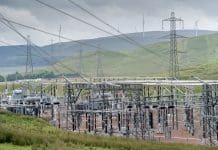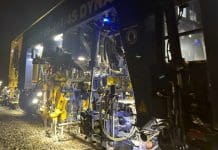Simon Evans of Arup and Gavin Starks of Icebreaker One discuss their work with Hippo Digital on the next phase of the government’s Energy Data Visibility Project, which aims to accelerate the journey towards net zero by improving access to energy metadata
The sheer scale of the challenge we face in achieving net zero quickly means that data is essential. Innovative digital solutions to cutting carbon and new net zero business models rely on getting access to all kinds of data – whether from smart meters, electric vehicles or assets within the grid.
We’ve already seen in the transport sector how the increased availability and visibility of online data has sparked an explosion in new services that have revolutionised mobility in cities. Apps such as Citymapper draw on an array of data sources to enable you to compare your travel options in real time for all urban mobility. Imagine if we could do something similar for energy.
As a consumer, in the future maybe a smart home could automatically change energy providers every second based on the real-time spot prices charged by different suppliers. Maybe we could even turn the whole tariff system on its head, with consumers submitting their consumption profile to suppliers who then bid to supply them. These ideas, as well as other consumer innovations and services that are emerging, just wouldn’t be possible without data or, more specifically, metadata.
The founding principle
Metadata, a description of the attributes of a dataset, is a founding principle for working with data. Agreed structures for metadata are what ultimately enables you to find the information you’re looking for on internet search engines.
Without metadata, the search engine can’t easily catalogue what’s been published and so can’t find it for you. As things stand, this is the sort of situation we face with energy data. Some of it is published, but the patchwork approach to metadata makes it difficult for the experts who need it to find and use it.
To address this, a partnership between engineering and consultancy firm, Arup, global non-profit organisation Icebreaker One and digital consultancy Hippo Digital is leading the next phase of the UK government’s Energy Data Visibility Project (EDVP) to organise and improve access to the UK’s metadata.
Our project, commissioned by the Department for Business, Energy & Industrial Strategy (BEIS) and funded by the £505m BEIS Energy Innovation Programme, is developing an innovative service that will unlock and centralise the UK’s current energy metadata sources to improve their visibility and accuracy. We aim to help accelerate the journey to net zero by making information more accessible, driving the scaling up of renewable energy projects and enabling innovation.
The project forms part of the Modernising Energy Data (MED) programmes being commissioned by BEIS, Ofgem and Innovate UK, which are leading the charge towards a digital energy sector.
Providing visibility
Modernising access to energy data will create the essential national infrastructure we need to meet our net zero targets. This project is helping to create new services to unlock innovation in the energy system and drive economic growth. We have seen similar happenings in other sectors such as banking, where Open Banking fuelled a revolution in innovation and attracted huge investment to the UK. Poor data visibility can act as a barrier for this innovation. Now more than ever, access to energy data and the ability to use it effectively is of crucial importance to supporting a net zero future.
All of this, though, relies on agreeing metadata standards and glossaries. The Arup team applied its energy expertise to this element of the challenge, informed by the one-to-one research conducted by Hippo Digital with energy data users to understand their needs and working with the Open Energy service in development by Icebreaker One, which enables users to search, access and share energy data.
The EDVP aims to deliver a new service that:
- Increases the visibility of energy system metadata by listing metadata centrally, to an agreed standard.
- Provides a mechanism for energy system participants to request missing/closed data.
- Provides direct access to data that is open to the user.
- Allows data users to provide feedback on the quality of data.
- Collects service analytics.
There are challenges still to address, including whether and how the provision of data could be mandated, and which regulatory policies need to be considered. For example, if users keep requesting, say, data on electric vehicle charging points in a certain county, at what point is the body responsible compelled to provide that data with the agreed metadata structure? It is also clear that the value of the service will grow as more datasets are included.
However, as we discuss these challenges and the next steps with BEIS, the completion of this phase of the project marks a further step towards realising the exciting potential of energy data.
Simon Evans
Digital energy leader
Twitter: ArupUK
LinkedIn: Arup
Gavin Starks
CEO
Twitter: IcebreakerOne
LinkedIn: IcebreakerOne



![[VIDEO] Cambridge waste water plant granted permission to relocate Artist impression of the new Cambridge waste water plant and surrounding land](https://www.pbctoday.co.uk/news/wp-content/uploads/2025/04/p.151-768x364-1-218x150.jpg)










